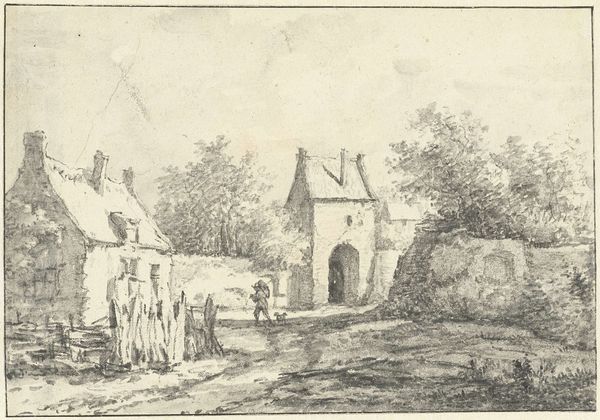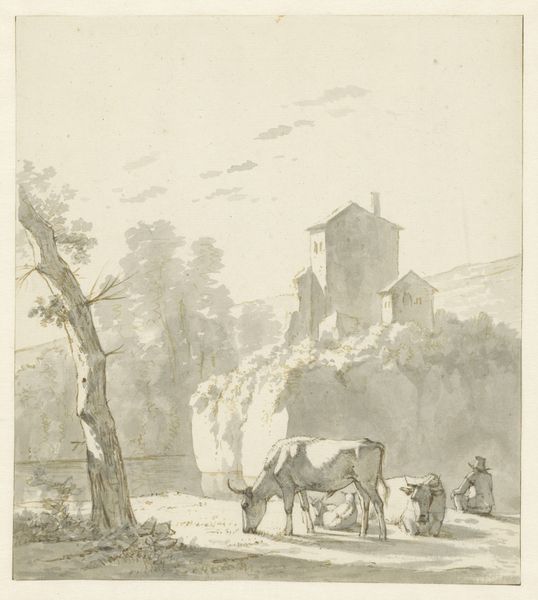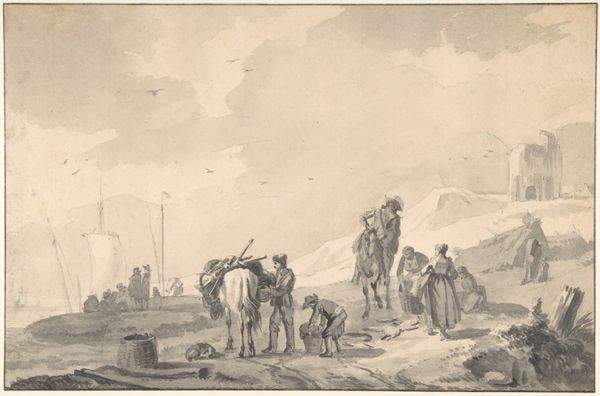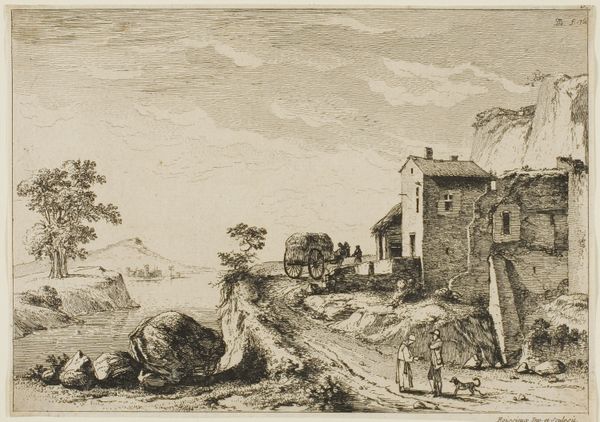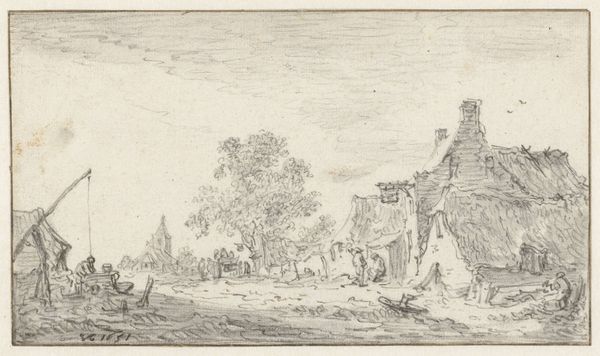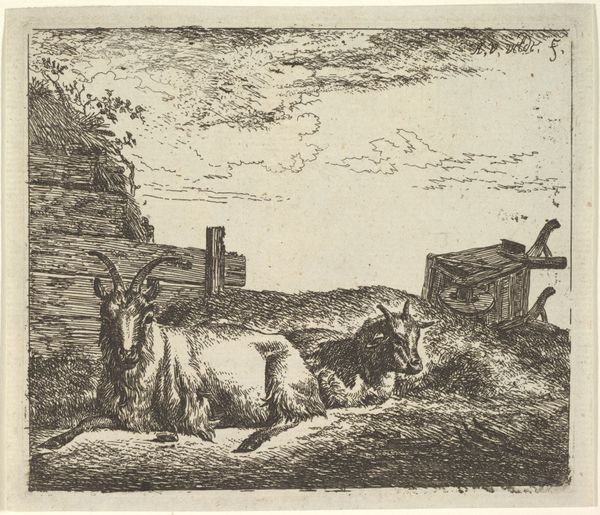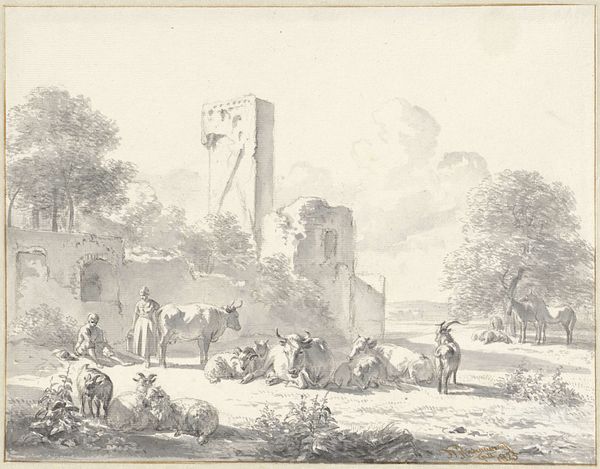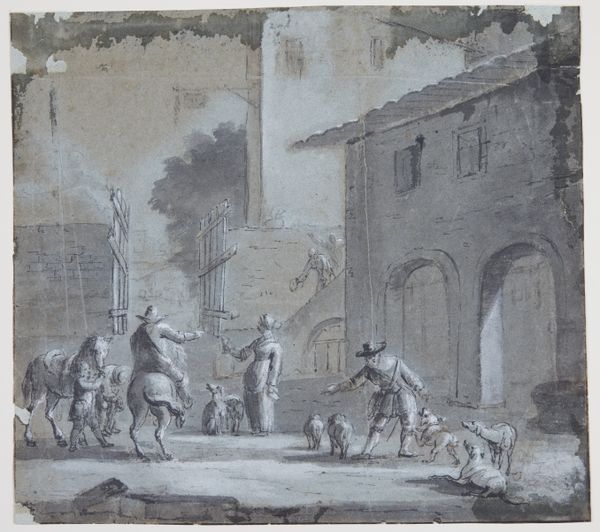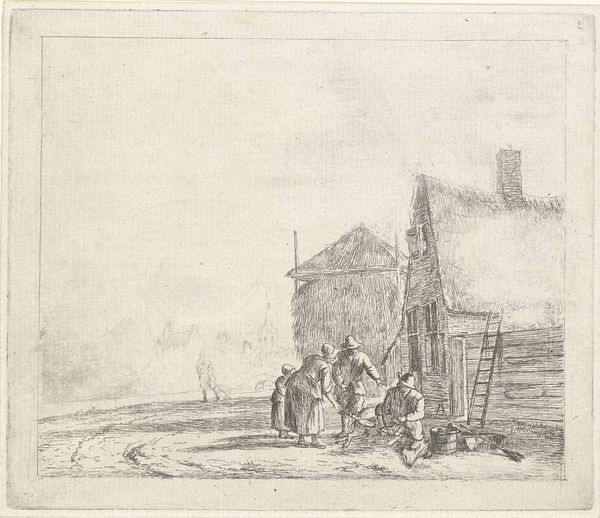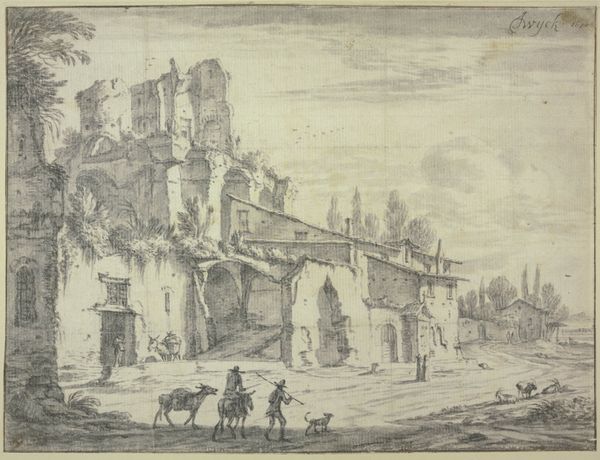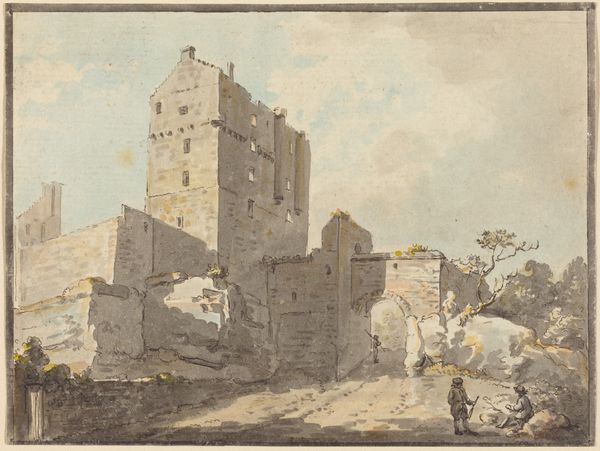
Haus an einem verfallenen Turm und Gruppen von rastenden Figuren
0:00
0:00
drawing, ink, chalk, graphite, architecture
#
drawing
#
landscape
#
ink
#
chalk
#
15_18th-century
#
graphite
#
architecture
Copyright: Public Domain
Curator: Let's discuss Johann Georg Wagner's "Haus an einem verfallenen Turm und Gruppen von rastenden Figuren" – or, "House by a Decayed Tower and Groups of Resting Figures," found here in the Städel Museum’s collection. The work uses ink, chalk, and graphite drawing. What catches your eye? Editor: The immediate impression is of ruin and repose. There's a definite air of melancholy hanging about. The tower itself seems like a relic, a silent observer of the everyday lives unfolding in its shadow. Curator: Yes, and consider the economic context. Think about the availability of these materials: the accessibility of graphite, chalk, and ink in the 18th century. Wagner likely had ready access to these materials. Notice the laid paper beneath. It suggests a certain level of disposable resources. This informs his production. Editor: That's a good point. And what about the figures themselves? They are gathered, but there's no clear interaction between them. They are individual actors within a shared space of decay. I see cycles of death and recreation interwoven; look to the figures leaning and laboring against the old tower—what a visual load! The tower also features an intriguing, obscured door which gives one pause. Curator: Exactly. The social implications are vital here. This isn’t the grand landscape painting commissioned by wealthy patrons, intended to showcase their dominion. It's an observation of daily existence, made accessible through comparatively humble means. Notice how the visible process - the layering of chalk and ink washes - contributes to this impression of authenticity and an observed truth. Editor: The contrast is so striking. The sturdy, decaying tower, possibly alluding to the past glories, contrasts with the transient existence of the figures. The donkey in the foreground feels emblematic of burdens—animal labor made to serve. How did the tower become this crumbling ruin? A result of conflict? Perhaps representing shifting religious affiliations and the impermanence of faith. Curator: Perhaps—a reminder of disrupted power dynamics through history; a collapse not only of building materials but socio-economic hierarchies as well! I appreciate you looking beyond simply representational meanings; by emphasizing materials and processes we move beyond questions of mere content to an assessment of means, social relations, and accessibility. Editor: A worthwhile reflection to consider the layers of meaning in plain sight. Curator: Indeed, looking at it this way we can really start thinking about all that lies just beneath the surface.
Comments
No comments
Be the first to comment and join the conversation on the ultimate creative platform.
